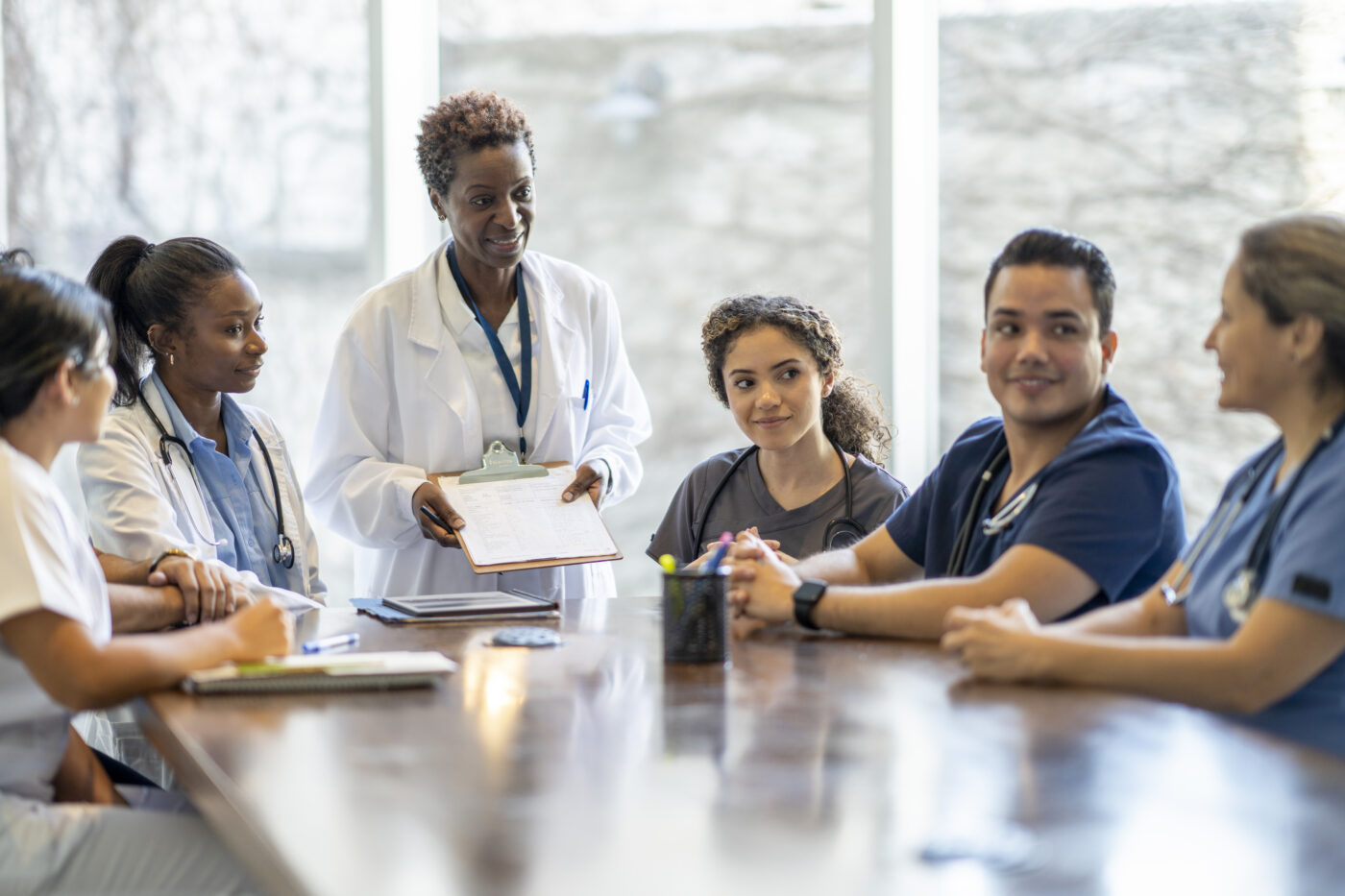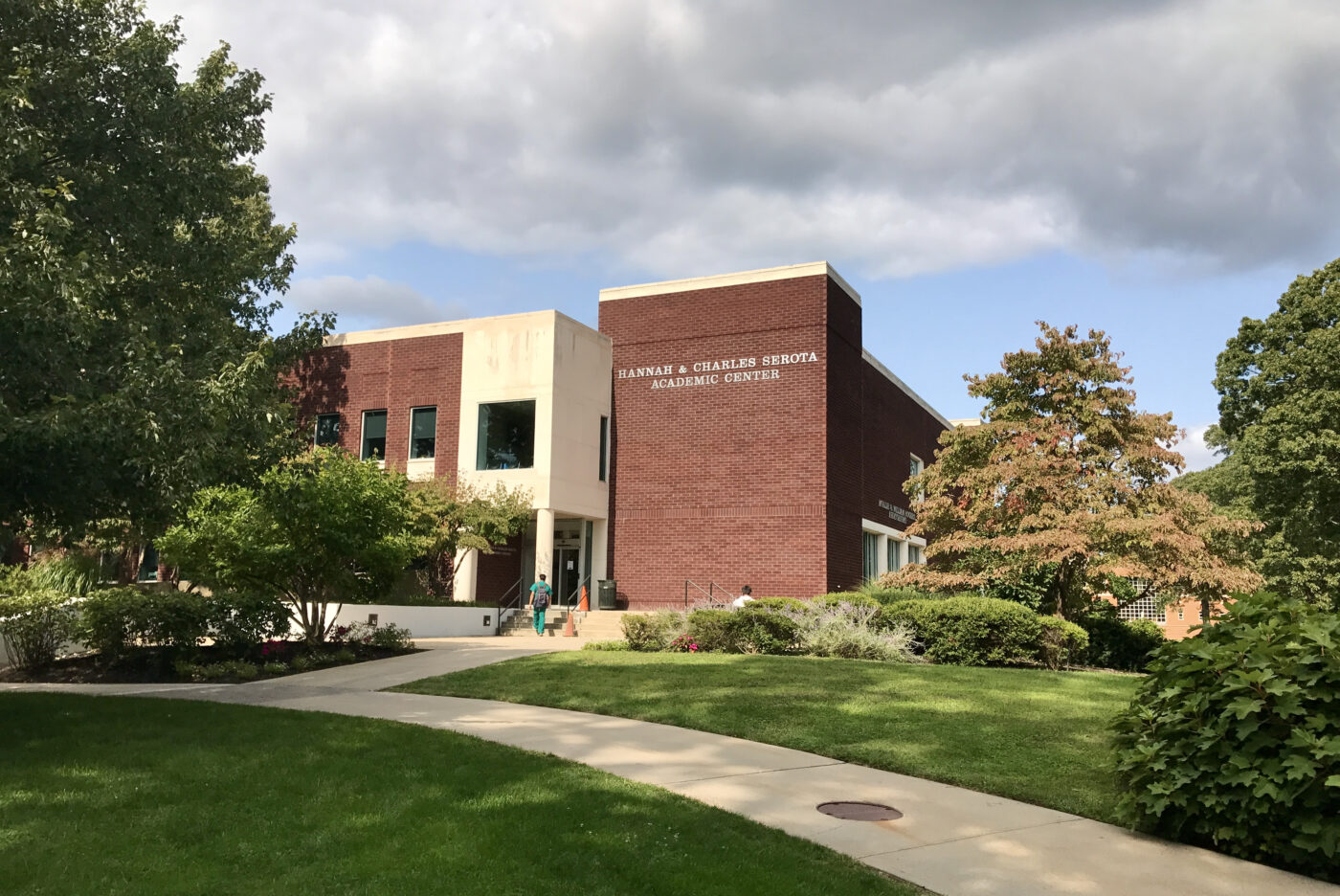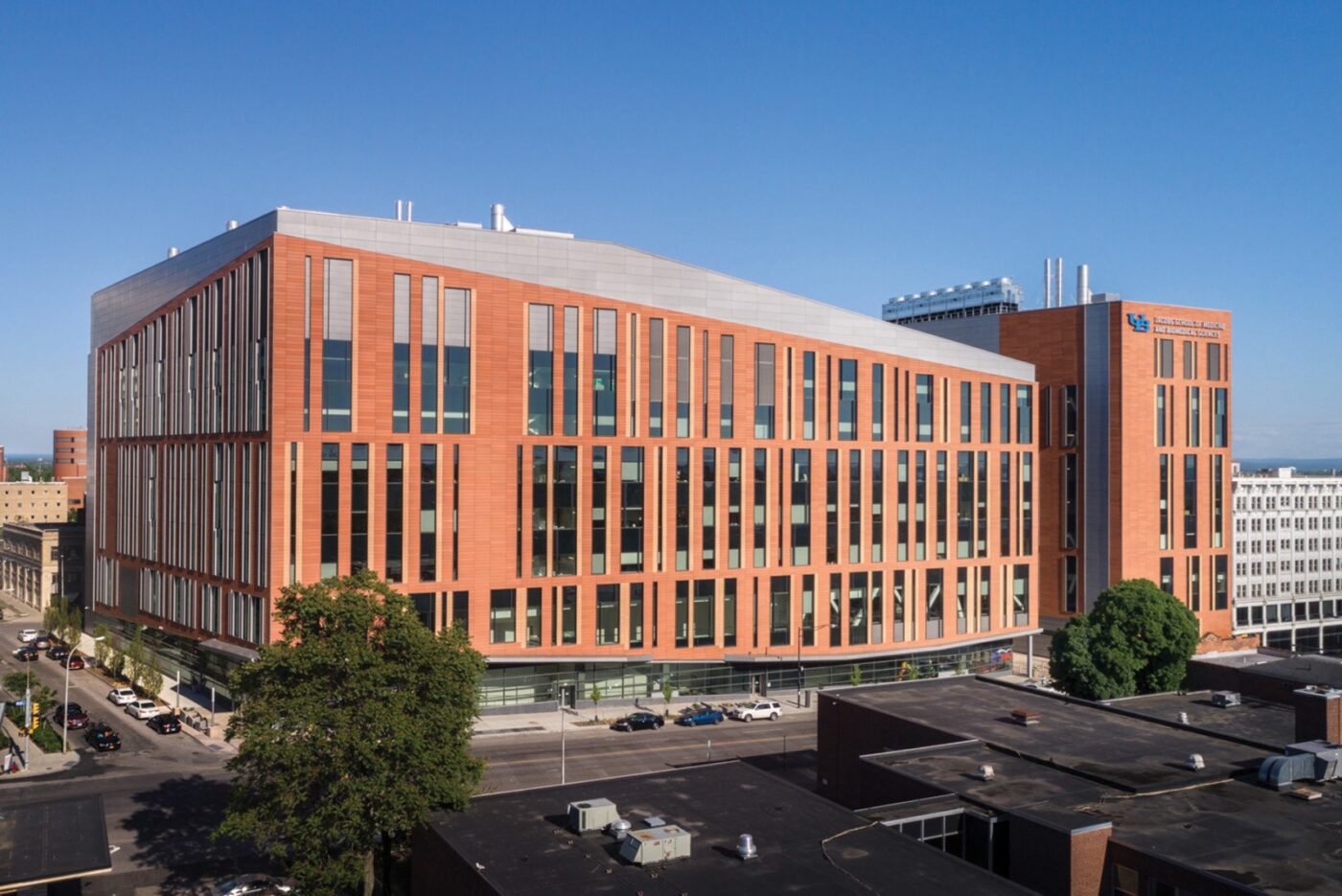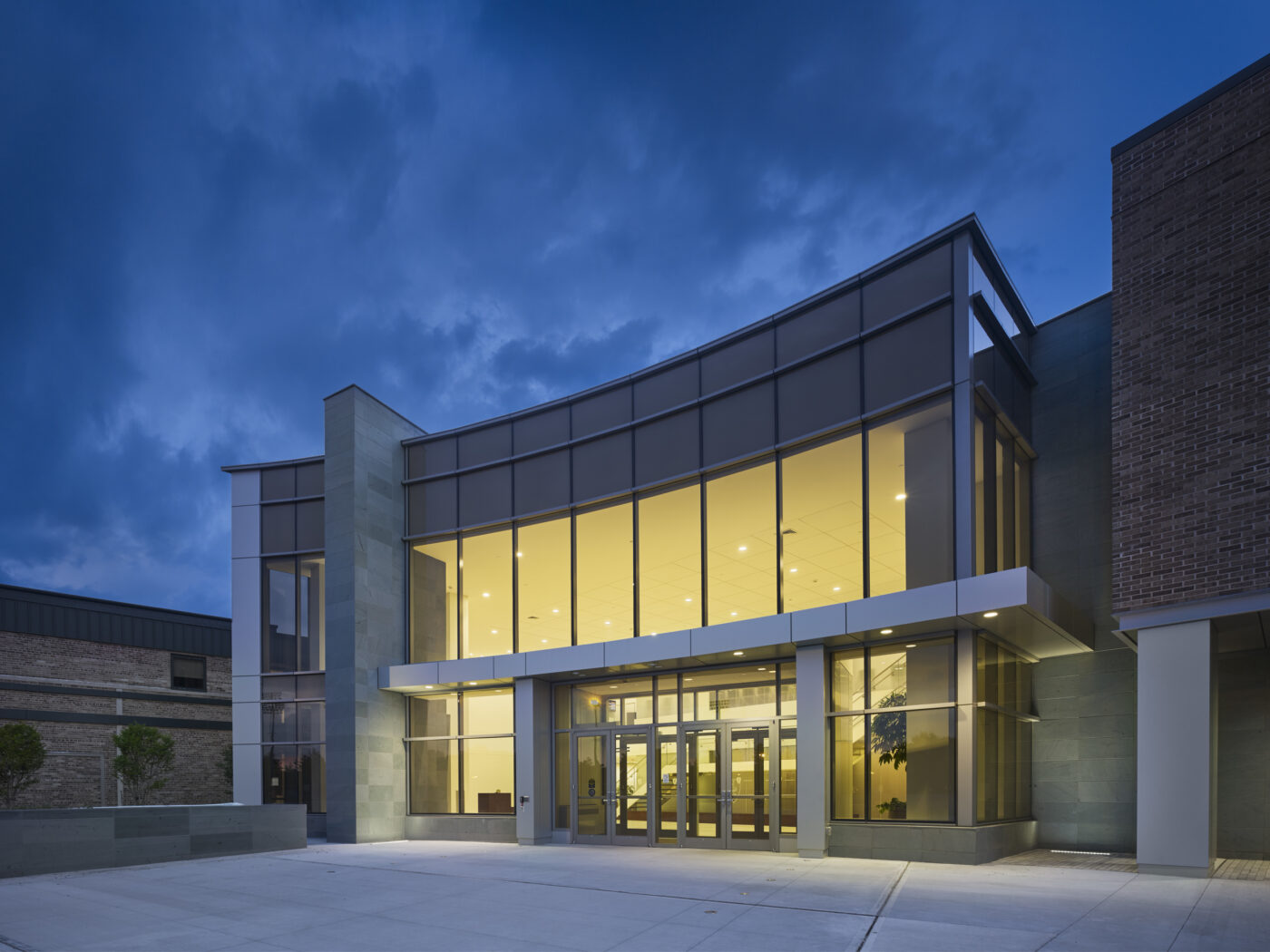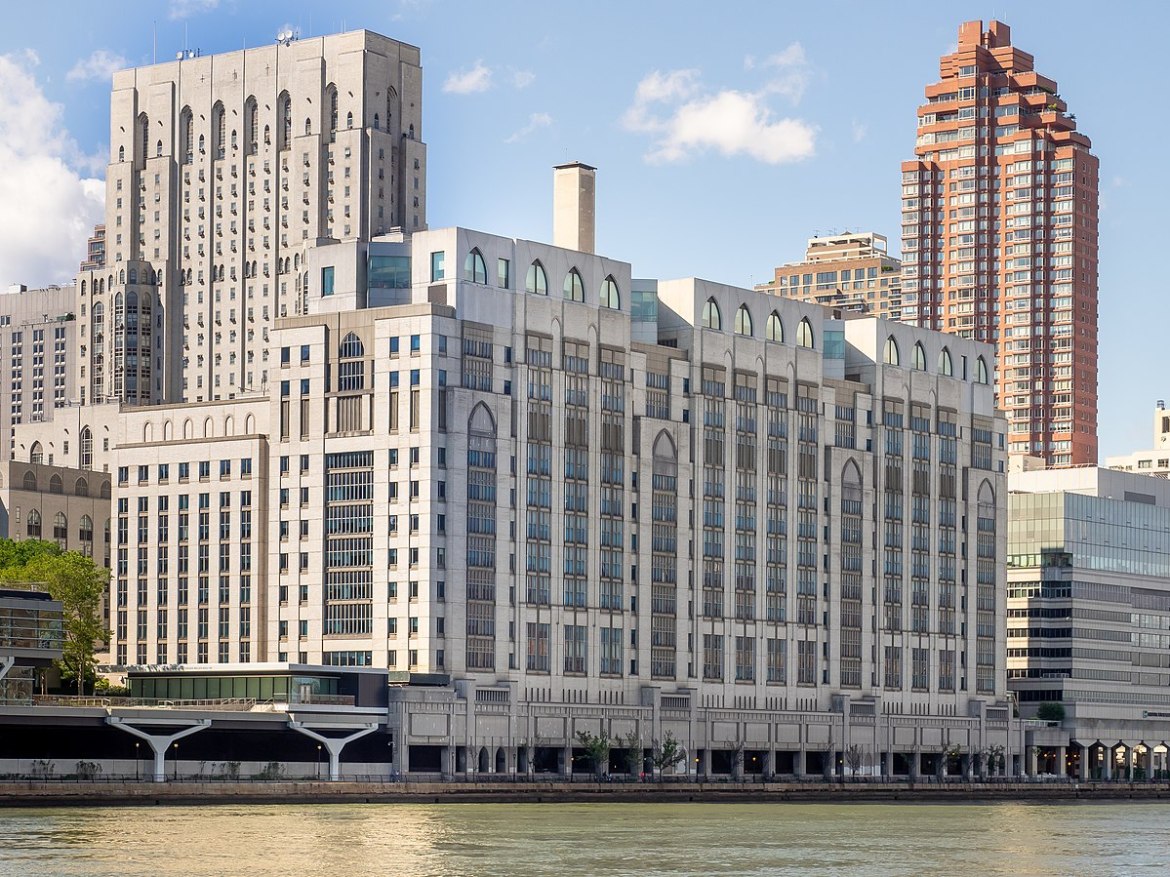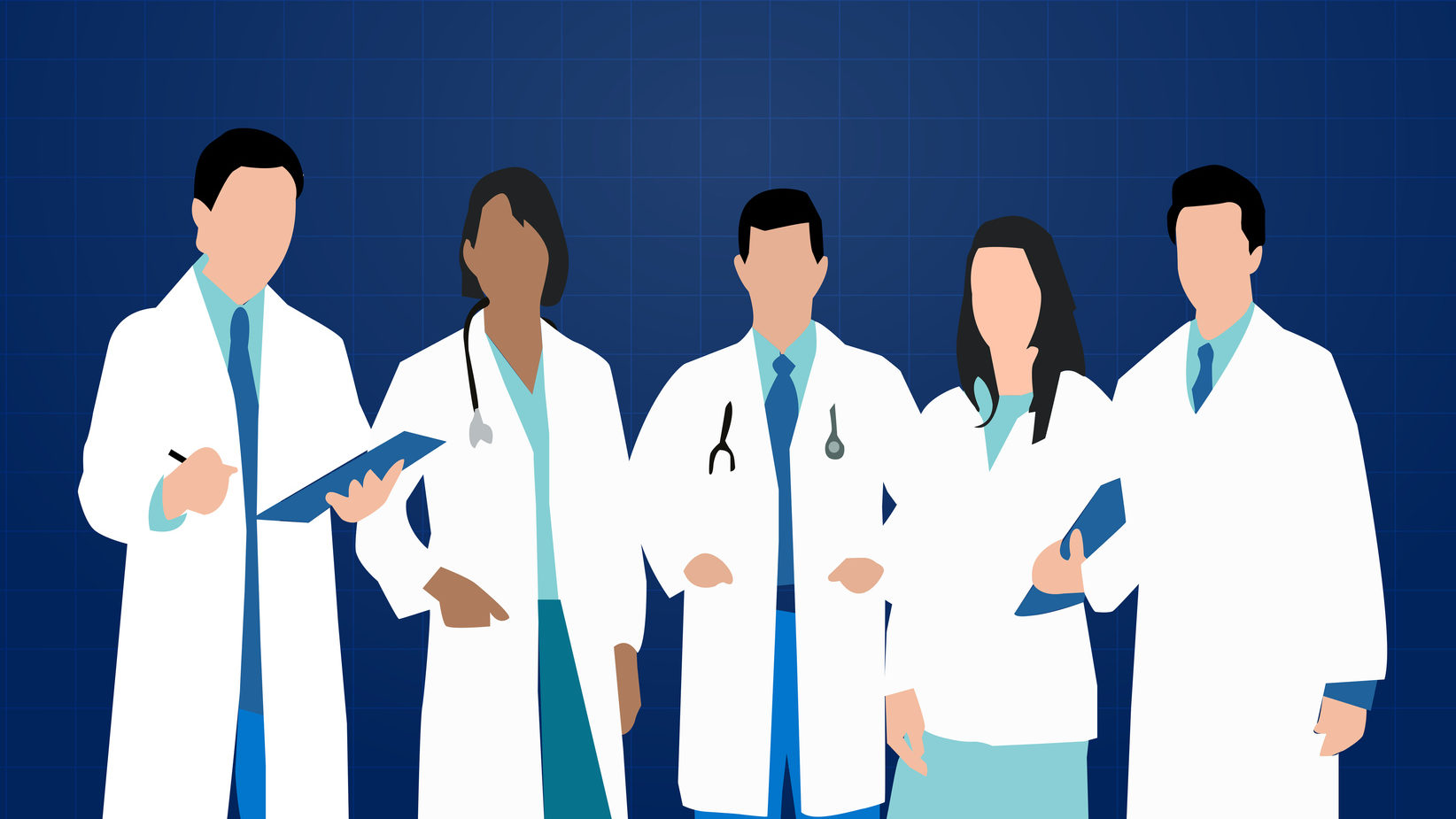The SUNY Downstate Medical Center College of Medicine serves the Brooklyn, New York area and is the only medical center for health education, patient care, and research that serves the 2.3 million residents of the Brooklyn borough.
SUNY Downstate Medical Center College of Medicine is 1 of 4 campuses within the 64-unit State University of New York (SUNY) system. SUNY Downstate Medical School is located on an urban campus in the East Flatbush section of Brooklyn. The SUNY Downstate Medical School is comprised of the following.
- College of Medicine
- School of Health Professionals
- College of Nursing
- School of Graduate Studies
- School of Public Health
- Downstate University Hospital
Be an Informed Applicant
Like all medical schools across the country, New York medical colleges have school-specific requirements and guidelines. Understanding the university’s identity, selection criteria, and programs will help you focus on your application and put your best foot forward.
This article covers:
- SUNY Downstate Medical School Rankings
- Medical Programs at SUNY Downstate Medical Center
- Selection Factors: What SUNY Downstate Medical School Looks for in an Applicant
- Academic Requirements
- SUNY Downstate Medical Center Acceptance Rate, Class Profile, and More
- SUNY Downstate Medical Center College of Medicine Tuition and Cost of Attendance
- AMCAS Application and SUNY Downstate Medical School Secondary Application
- SUNY Downstate Medical School Secondary Application: Essay Prompts, Sample Answers, and Advice
- Medical School Admissions Consulting
- Voluntary Healthcare Internships Abroad
Personalized Help
Many students find themselves overwhelmed by medical school applications. Each school you apply to has its own unique admissions process. To best help you get into your dream medical school, consider working with an admissions consultant.
A medical school admissions consultant will help and guide you through every stage of the application process while offering personalized feedback and support to help you succeed. International Medical Aid can help you curate a competitive application, highlighting your strengths and tailoring your message to each school.
If you are like many medical students, you will benefit greatly from our personalized medical school admissions consulting.
Why the SUNY Downstate Medical School?
Those who attend the SUNY Downstate Medical Center have the unique pleasure of taking in the great sights and sounds all across New York. The rich culture of Brooklyn brings its unique patient population with it. The patient population of Brooklyn has needs related to income, language, education. If you care about making a difference, then SUNY Medical Center may be the right choice for you.
SUNY Medical Center College of Medicine has a four-pronged mission that is geared toward fostering the development and proficiency of interprofessional skills through the utilization of collaborative learning across all SUNY campuses. Students of SUNY Downstate Medical School learn team-based communication skills which help them advocate for the best possible patient health outcomes.
SUNY Downstate Medical School Rankings
- #82 Most Graduates Practicing in Medically Underserved Areas
- #126 Most Graduates Practicing in Primary Care Fields
- #150 Most Graduates Practicing in Rural Areas
Medical Programs at SUNY Downstate Medical School
Before applying, it is crucial to research the different programs offered by SUNY Downstate Medical Center. This research will aid in your decision of which medical school is a good fit for you and help you focus your application.
In this article, we will be discussing the 3 main degrees offered by SUNY Downstate Medical Center.
MD Program
The MD program at SUNY Downstate is Brooklyn’s only academic medical center, and because of this, students of SUNY Downstate have the unique opportunity to collaborate with medical professionals from the nearby SUNY Downstate Hospital.
During all 4 years of education, the SUNY Downstate Integrated Pathways curriculum weaves clinical and basic science education. Here is what the college has to say about their MD program:
- Our primary goal is to develop excellent physicians. By the time you graduate, you’ll have the scientific, cultural, and social background needed to thrive in the field.
- Equity in healthcare is a guiding principle for the College of Medicine. You’ll work closely with patients and providers in and around Brooklyn, a community of 2.3 million people. Here, you’ll learn to deliver culturally sensitive, identity-specific healthcare.
- Our Integrated Pathways Curriculum mixes clinical experience with basic science.
- You’ll master the six core competencies of a physician: systems-based practice; professionalism; interpersonal and communication skills; practice-based learning and improvement; patient care; and medical knowledge.
- SUNY Downstate is home to more than a dozen centers specializing in areas such as Alzheimer’s disease, asthma, and HIV.
MD/PhD Program
The MD/PhD program was introduced in 1967 and has been helping graduates launch their careers ever since. Students who partake in the MD/PhD program will follow the basic med curriculum. The first 18 months of your studies will be the Foundations of Medicine, at the same time you will be working in research labs during your first two summers.
You will focus on research at the school of graduate studies. After completing your PhD, you will return to the College of Medicine to complete your MD.
MD/MPH Program
The MD/MPH program from SUNY Downstate gives students the power to become better physicians. By earning a Master of Public Health degree alongside an MD, students gain a deeper understanding of both health and disease.
Selection Factors: What SUNY Downstate Medical School Looks for in an Applicant
What exactly is the SUNY Downstate Medical Center looking for in medical program candidates—MCAT scores, grades, and internships?
Many colleges take a holistic review approach when looking over incoming admissions applications. This means an evaluation of your entire application and trying to get the big picture idea of who you are not only as a candidate but as a person. The AAMC Core Competencies for Entering Medical Students serve as a guide during this review process.
If you want to get accepted into the SUNY Downstate Medical School program, be sure to focus on and highlight these criteria in your application. Don’t be afraid to reach out for personalized help with your application.
Application Requirements for SUNY Downstate Medical Center College of Medicine
SUNY Downstate Medical School has specific academic criteria and admission requirements that applicants must meet in order to receive a secondary application. Failure to meet the requirements will result in not receiving a secondary application.
GPA and MCAT Requirements
The SUNY Downstate Medical School does not list a minimum GPA or MCAT required to submit an application to their medical programs. However, all applicants must have completed 90 semester credits from an accredited college or university.
Volunteer and Clinical Experience
The college’s admissions website states that the admissions committee seeks individuals who have a demonstrated commitment to non-medical community and social service outreach activities.
What counts as volunteer service and clinical experience:
- Clinical Experience – Experience with patient exposure can be gained through volunteering or working at hospitals, emergency rooms, extended-care facilities, and homeless clinics.
- Volunteer and Community Service – Demonstrate your involvement within your community by participating in community service or volunteering.
- Research – Many medical schools research to be a crucial part of the preparation for medical school. Research experience can be performed at any site and in any discipline. Be able to describe your projects, questions asked, and your role in the conducting of the research.
- Leadership – Leadership can through a variety of avenues such as in the community, church, at work, or at school organizations can be added to your application.
- Extracurricular Activities – List any extracurricular activities you partake in as the ability to juggle these activities is a strong indicator of how you handle responsibilities and the potential stress and demand of medical school.
SUNY Downstate Medical Center Letters of Recommendation
Being a competitive applicant includes providing letters of recommendation. The letters you submit should be compelling and demonstrate your potential for success in the medical field.
These letters should be written by people who you trust and who can accurately portray your integrity, interest in medicine, academic ability, interpersonal skills, and resiliency. For more information or details about who is best suited to write you a letter of recommendation, check out the SUNY Downstate Medical School website pertaining to admission requirements. They neatly outline examples of who should write academic letters of recommendation and who should write non-academic letters of recommendation.
Here are the SUNY Downstate Medical Center School of Medicine guidelines and requirements for submitting letters of recommendation. All letters of recommendation should be submitted through the AMCAS Letters Service. Please keep in mind that the majority of medical colleges prefer letters of recommendation written by a Pre-health Advisory Committee.
The SUNY Downstate Medical Center requires applicants to submit no more than 2 individual letters of recommendation. Those who are submitting a packet can include as many letters as they like within the packet, but applicants who submit more than 2 individuals should be aware that the admissions committee will not review more than 2 LORs.
Required Coursework for SUNY Downstate Medical School
The SUNY Downstate Medical Center College of Medicine lists the following courses as requirements for application to their medical programs. A grade of “C” or better in each of the courses is required.
English – 6 Semester Hours
General Biology or Zoology Including Labs – 8 Semester Hours
General Physics With Labs – 8 Semester Hours
General or Inorganic Chemistry With Labs – 8 Semester Hours
Organic Chemistry With Labs – 8 Semester Hours
Does SUNY Downstate Medical School Require the CASPer exam?
The CASPer exam is an online test that is required by some medical schools. This exam assesses a candidate’s non-cognitive and interpersonal skills. Designed to complement traditional admission methods of a college by judging the applicant’s professional and personal competencies.
As of 2023, the CASPer exam is not required by SUNY Downstate Medical Center College of Medicine.
SUNY Downstate Medical Center Acceptance Rate and Admission Statistics
The SUNY Downstate Medical Center has an overall acceptance rate of 14%. While the college’s acceptance rate is higher than that of the average med school acceptance rate across the US. It is important to keep in mind SUNY Downstate Medical School is one of the only medical schools in Brooklyn, and many residents and those in the surrounding area are likely to be applying.
Let’s review some of the recent stats for entering classes at SUNY Downstate.
- Approximately 200 Students
- Mean Age 24
- 54% Female
- 45% Male
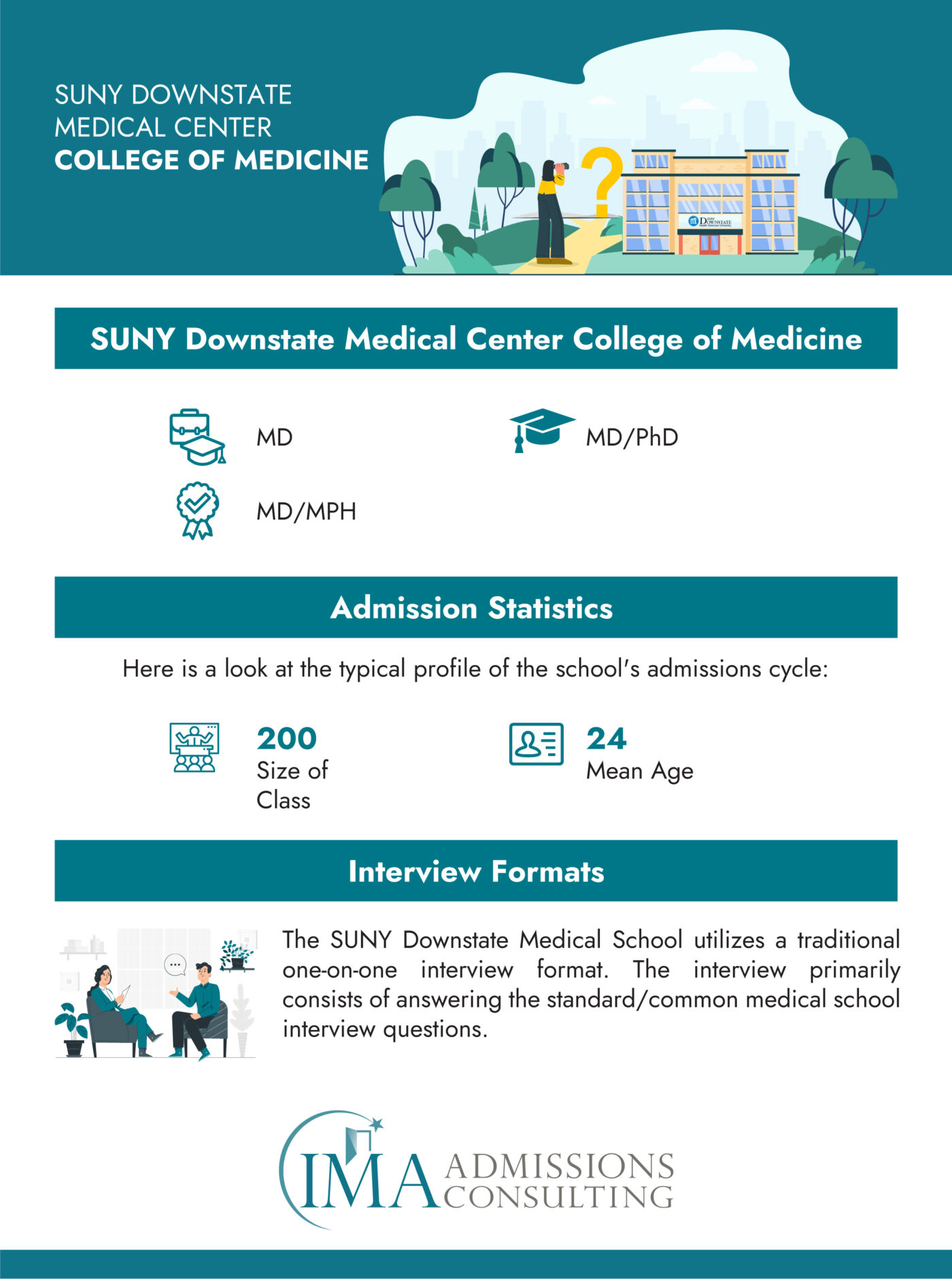
SUNY Downstate Medical School Tuition and Cost of Attendance
In addition to tuition and fees, SUNY Downstate students should budget for incidentals, textbooks, supplies, and living costs. The Office of Student Financial Services has provided the following estimated figures for the upcoming school year.
Year 1:
- $44,376 Tuition and Fees
- $1,500 Books and Supplies
- $26,080 Room and Board, Travel, and Personal Expenses
- $4,392 Health Insurance
- $1,619 Loan Fees
- $77,967 Total for In-state Students / $99,457 Total for Out-of-state Students
Year 2:
- $44,376 Tuition and Fees
- $1,500 Books and Supplies
- $26,080 Room and Board, Travel, and Personal Expenses
- $4,392 Health Insurance
- $1,619 Loan Fees
- $630 Step I Costs
- $78,603 Total for In-state Students / $100,087 Total for Out-of-state Students
Year 3:
- $44,376 Tuition and Fees
- $979 Books and Supplies
- $31,200 Room and Board, Travel, and Personal Expenses
- $4,392 Health Insurance
- $1,619 Loan Fees
- $630 Step II Costs
- $1,290 CSE Exam Fee
- $84,486 Total for In-state Students / $105,976 Total for Out-of-state Students
Year 4:
- $44,436 Tuition and Fees
- $979 Books and Supplies
- $30,750 Room and Board, Travel, and Personal Expenses
- $4,392 Health Insurance
- $1,619 Loan Fees
- $3,750 Residency Interview Costs
- $83,864 Total for In-state Students / $105,504 Total for Out-of-state Students
AMCAS Primary Application and SUNY Downstate Secondary Application
The AMCAS is the primary application for almost every medical school. Your primary application is sent to all of the medical schools that you apply to. For the SUNY Downstate Medical Center College of Medicine, it takes approximately four to six weeks for your AMCAS primary application to be reviewed. While four to six weeks is the standard amount of time it takes for someone to review your initial application, this length can be affected by a variety of factors. If you do not hear back within six weeks, do not become immediately discouraged.
After receiving your primary application, the SUNY Downstate Medical School will invite you to fill out the school’s secondary application. All secondary applications are school specific and these applications include questions that the school feels are important in determining if you will be a good fit for the institution.
Please note that you will not be invited to complete the SUNY Downstate secondary application if you do not meet the admissions requirements outlined previously in this article. For a refresher on what the required premedical coursework is, go back to the required coursework section. You will also want to note if you have participated in any of the additional recommended coursework outlined by the SUNY Downstate Medical Center.
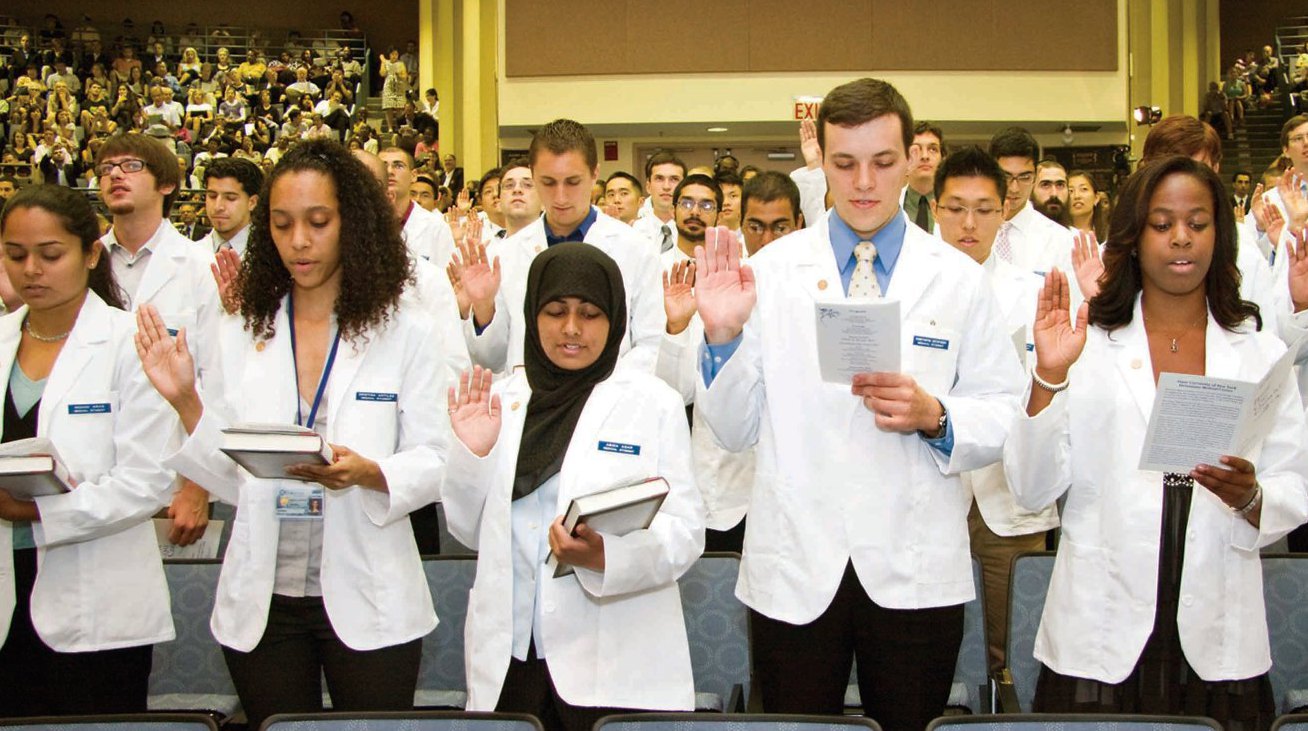
SUNY Downstate Secondary Application: Essay Prompts, Sample Essay Answers, and Advice
Completing your secondary application is a critical part of applying to a medical school. In the secondary application, you can express your character, ambitions, motivations, and more. This is your chance to demonstrate what makes you a unique and ideal candidate for the SUNY Downstate MD program. Here are a few tips for submitting a successful secondary application to the SUNY Downstate Medical School:
- Read and pay close attention to each essay prompt on the application and address all of its questions in your response.
- When supporting your responses, use concrete evidence from your academic, professional, and extracurricular experiences.
- Do not simply repeat information from your AMCAS. In the same realm, use the secondary application as an opportunity to explain further anything that you feel you did not get to go into great detail about in the primary application.
- Thoroughly proofread and edit your application materials before submitting them.
- Write each and every essay in a clear and concise manner. Omit any unnecessary words and sentences, avoid filler, and ensure you stay on topic per the essay’s prompt.
- Consider utilizing IMA’s admission consulting. Writing thousands of words for medical school applications can be time-consuming. Admissions consultants help by taking an in-depth look at your application and finding areas for improvement.
The secondary application for the SUNY Medical Center College of Medicine includes a series of essay prompts that applicants must answer. These prompts allow the admissions committee to get a better feel for each applicant as an individual rather than just as a candidate.
Essay #1
Are there any periods longer than 3 months, from the time you graduated from high school to now, when you were not employed full time or in college full-time? If yes, please describe your activities. (No word count listed)
This question will not apply to all applicants, but for those that it does apply to, they should briefly explain what activities they participated in during the time in which they were not in college or employed. These activities may include internships, volunteer work, and other various activities that can aid in the development of skills crucial to those in the medical field.
Essay #2
Will you be attending college full-time as of September 15? If no, please describe your activities for the period of September 15 to July 1. (No word count listed)
Similar to the previous question, this will not apply to all students. Those who intend on taking a break or waiting to begin college full time should explain the activities they intend to participate in during this time period.
Essay #3
What will be your support system while in medical school? (Limit 150 words)
Briefly tell the admissions committee about your current support system and/or the support system you will have while attending medical school.
Here is a sample answer:
During medical school, my primary support system will be my immediate family. My family lives nearby the NYITCOM Long Island campus and have been a huge source of support for me throughout my life thus far. Having my family close by while I attend college will allow me to receive emotional support which I would not have otherwise.
My family will act as my support system by providing housing, food, various personal and living expenses, and of course, emotional support to ensure I succeed and do my best while attending university.
As for the remaining finanical support needs, such as tuition and supplirs, I will be receiving all financial and monetary support through the loans, scholarships, and financial aid offered by NYITCOM.
Essay #4
If you are not from the 5 boroughs of New York City, describe what personal, urban experiences prepare you to live and study in New York City. If this question does not apply to you, enter “not applicable” in the text box below. (Limit 150 words)
For applicants who do not reside in New York, you can answer this question by discussing any experience you have living, studying, or visiting urban areas.
Here is a sample answer:
While I do not have personal experience growing up or living in one of the five boroughs in New York, I do have personal experience growing up in an urban area of my home state of Ohio. Although the urban areas of Ohio and New York are different, there are still many similarities between the two.
I grew up in the city of Cleveland, Ohio, which is one of the most urban areas/cities within the state. Being born and raised in Cleveland has provided me with a wealth of insight into how urban areas work and allowed me to grow up around a large diverse population of people. This experience in a diverse community will help me adjust to the diverse campus population and living on campus quickly.
Essay #5
If you had a completed application to the College of Medicine in a prior application cycle, please highlight any changes since your previous application in a list with dates. If this question does not apply to you, enter “not applicable” in the text box below. (Limit 150 words)
If you have previously applied to SUNY Downstate, take the time to explain how you have improved upon your application and any activities you have participated in to further your volunteer and clinical experiences.
Essay #6
If you have a specific reason why you wish to attend SUNY Downstate or a medical school in New York City, please explain. If this question does not apply to you, enter “not applicable” in the text box below. (No word count listed)
Students who have chosen to attend a medical college in New York City for a personal or specific reason, should utilize this prompt to elaborate on their reasoning for deciding to pursue medical education at a medical school in Brooklyn.
Essay #7
What in your current/future activity/activities have/will contribute to diversity, health equity, and social justice? (No word count listed)
Applicants who plan to continue their learning through clinical experiences, additional courses, or internships should take the time to explain their future plans to the admissions committee.
Here is a sample answer:
My plans for the future include taking part in many activities that will contribute to health equality. These activities include taking part in International Medical Aid’s pre-med shadowing study abroad program. The voluntary abroad internship offered by IMA will allow me to help serve those in medically underserved areas, such as Africa and South America.
By participating in these internships, I will be able to grow and develop crucial skills that will help me become a better physician and contribute to health equality in underserved areas.
Medical School Admissions Consulting
At International Medical Aid, we make it a point to offer aspiring medical professionals thorough and informative content. We understand that getting into med school is hard work, and we want you to succeed during the application process.
One of the best ways to boost your medical school program application is with the expert help of an admissions consultant. Whether you need guidance writing your essays, developing an application strategy, or navigating the process, we are here to help.
We recommend taking a moment to schedule a free consultation with IMA here.
Voluntary Healthcare Internships Abroad
IMA’s voluntary healthcare internships provide students with the opportunity to shadow doctors, gain valuable medical field experience, and work in hospital and clinical environments. All of the internships we offer are intensive and patient-facing. Through International Medical Aid’s pre-med shadowing study abroad programs, aspiring med students gain real-life clinical experience and become further prepared for medical school.
The internships go far beyond creating a compelling medical school application. IMA’s programs serve struggling areas and populations across the globe. By interning abroad, you can develop your patient communication skills, serve the medically underserved, and broaden your perspectives.
There is a lot to learn when it comes to our pre-med shadowing study abroad programs, so please take the time to explore the programs on our website.
Good Luck!
We want to wish you good luck as you navigate the med school application process. Remember to be strategic about your application, take your time, and do not hesitate to ask for help.
Applying for medical school programs is often a stressful and overwhelming process that is hard for new students. If you feel you may need additional help with your application, essay responses, or prepping for your upcoming semester, don’t forget to utilize IMA’s consulting services.
If you are considering applying to any other med schools in New York or other states, we have ultimate guides for most med schools available on our website. Whether you want to know “how medical schools stack up to other medical schools near me” or just want to check out guides for other colleges, don’t forget to check out our ultimate guides.
- NYIT College of Osteopathic Medicine
- NYU Long Island School of Medicine
- TOURO College of Osteopathic Medicine
- Albany Medical College
- Norton College of Medicine at Upstate Medical University
- Jacobs School of Medicine at the University at Buffalo
- Hofstra Zucker School of Medicine
- Weill Medical College of Cornell University
- University of Rochester Medical School
- Icahn School of Medicine at Mount Sinai
- Renaissance School of Medicine at Stony Brook University
- Albert Einstein College of Medicine
- Ohio University Heritage College of Osteopathic Medicine
- Northeast Ohio Medical University (NEOMED)
- University of Cincinnati College of Medicine
- University of Toledo College of Medicine
- Wright State University Boonshoft School of Medicine
- Ohio State University College of Medicine
- Rowan University School of Osteopathic Medicine
- Hackensack Meridian School of Medicine (HMSOM)
- Rutgers New Jersey Medical School (NJMS)
- Rutgers Robert Wood Johnson Medical School
- Cooper Medical School of Rowan University (CMSRU)
- A.T. Still University Kirksville College of Osteopathic Medicine
- Saint Louis University School of Medicine
- University of Missouri Medical School
- Kansas City University (KCU)
- UMKC School of Medicine
- New York Medical College
- University of Pittsburgh School of Medicine
- University of Wisconsin Medical School
- VCU School of Medicine
- University of Maryland School of Medicine
- Case Western Medical School
- University of North Carolina Medical School
- University of Florida Medical School
- Emory University School of Medicine
- Boston University College of Medicine
- California University of Science and Medicine
- UC San Diego Medical School
- California Northstate University College of Medicine
- Touro University of California
- CHSU College of Osteopathic Medicine
- UC Davis School of Medicine
- Harvard Medical School
- UC Riverside School of Medicine
- USC Keck School of Medicine
- UT Southwestern Medical School
- Long School of Medicine at UT Health San Antonio
- University of the Incarnate Word School of Osteopathic Medicine
- UT Austin’s Dell Medical School
- UTMB School of Medicine
- McGovern Medical School at UT Health
- Johns Hopkins School of Medicine
- McGovern Medical School at UT Health
- The University of Texas Rio Grande Valley School of Medicine
- UNT Texas College of Osteopathic Medicine
- University of Houston College of Medicine
- Texas A&M College of Medicine
- Johns Hopkins Medical School
- Baylor College of Medicine
- George Washington University School of Medicine
- Vanderbilt University School of Medicine
- St. George’s University School of Medicine
- Lake Erie College of Osteopathic Medicine (in Pennsylvania)
- Sidney Kimmel Medical College at Thomas Jefferson University
- Wake Forest University School of Medicine
- Western University of Health Sciences (in California)
- Drexel University College of Medicine
- Stritch School of Medicine at Loyola University Chicago
- Georgetown University School of Medicine
- Yale School of Medicine
- Perelman School of Medicine
- UCLA Medical School
- NYU Medical School
- Washington University School of Medicine
- Brown Medical School


